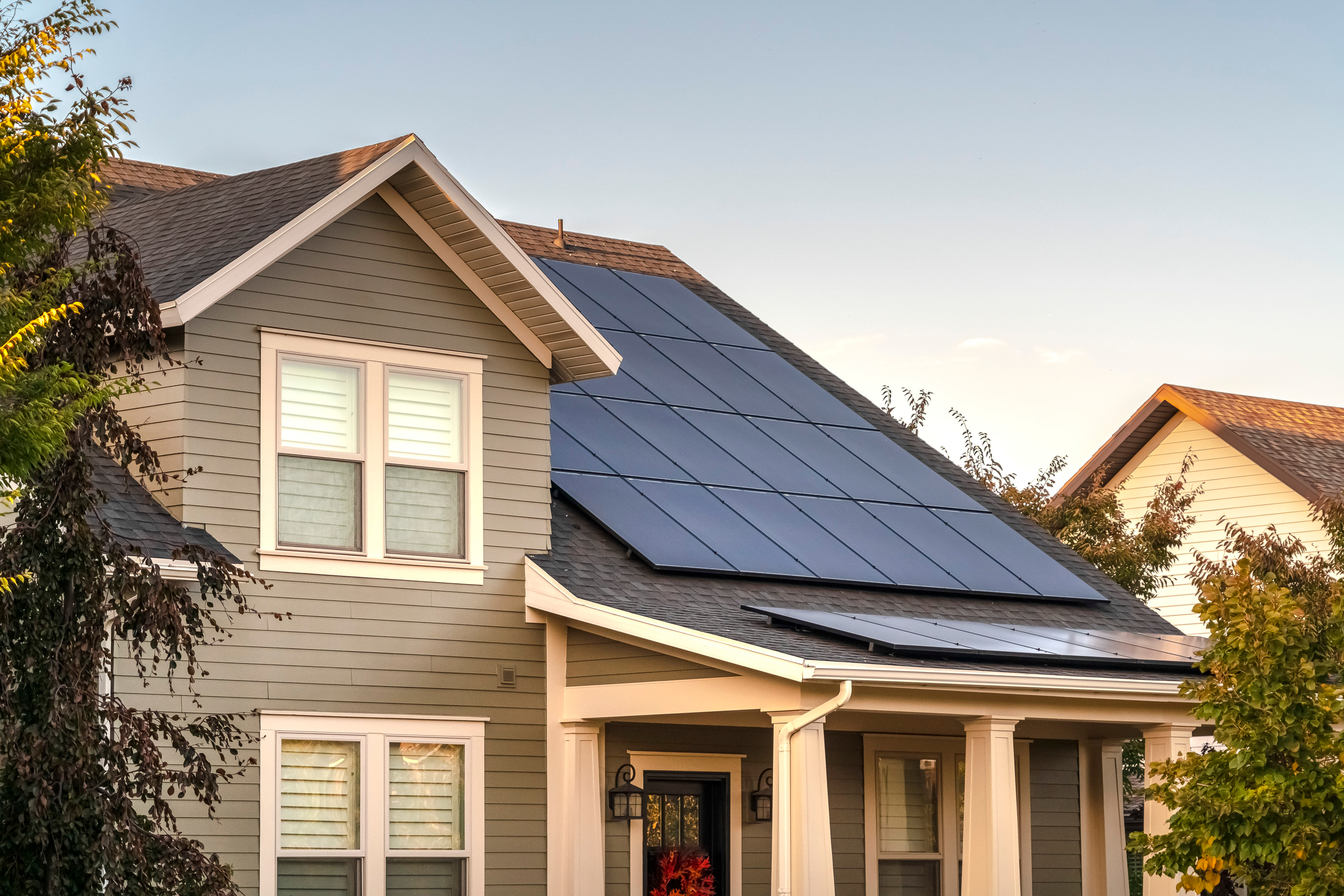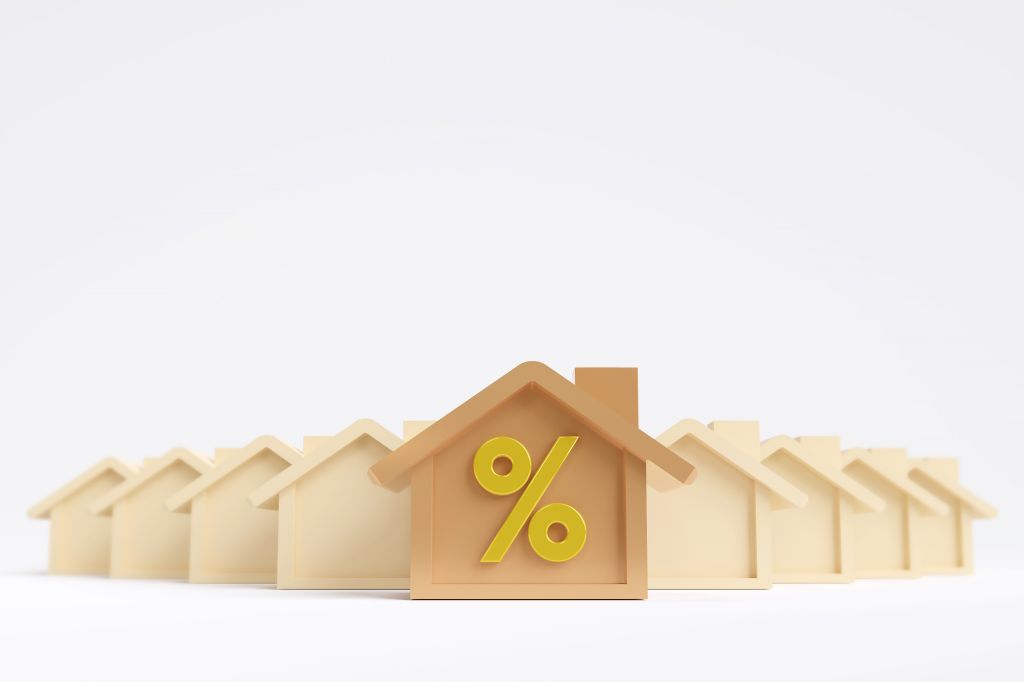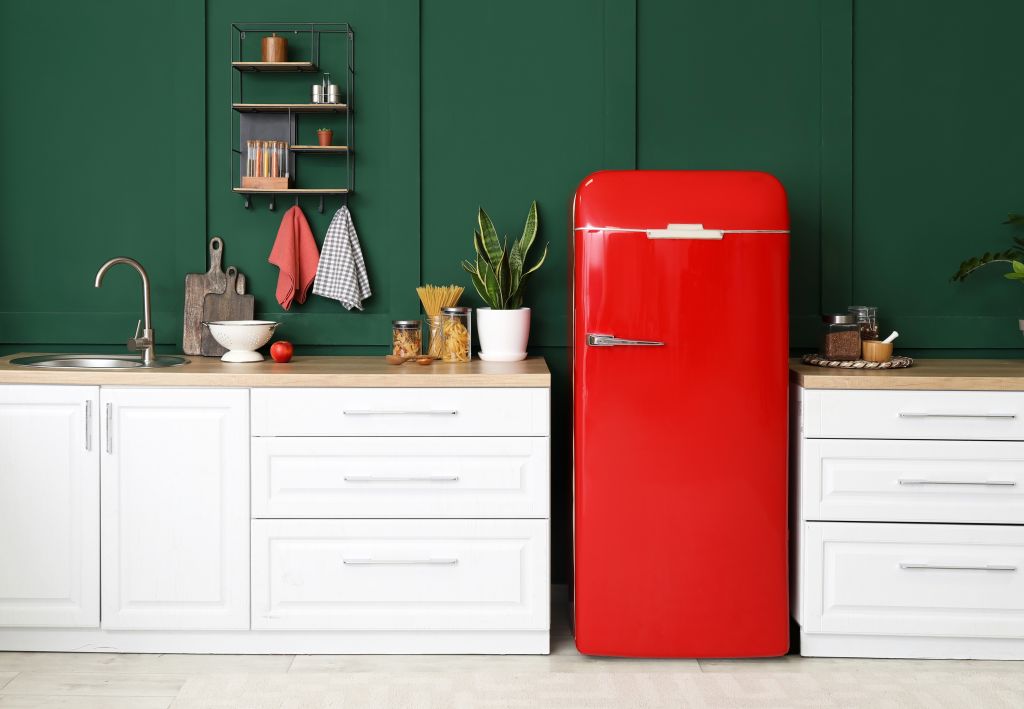Published February 13, 2024 • 4 Min Read
The energy we use to power our homes doesn’t just have an impact on our utility bills: It can also increase the environmental impact of where we live.
When home energy is generated by burning fossil fuels, carbon dioxide and other greenhouse gases are released into the atmosphere, which contribute towards global warming and climate change. Given that almost half of Canada’s housing was built before 1980 — a time when energy-efficiency wasn’t a top priority — many of our homes were built to a lower energy-efficiency standard.
What is a “green home”?
A “green home” is a residential building that achieves higher standards of energy-efficiency than a traditionally built home. It’s designed to release fewer greenhouse gases by being extremely well-insulated, using electric appliances, or being powered, at least in part, by renewable energy sources. New homes can be built to meet the standards of a green home, and older properties can be retrofitted with energy-efficient upgrades and technology.
How much does a green home cost?
While the upfront costs of purchasing a brand new green home could cost more than a “non-green” equivalent, homeowners could see lower monthly costs. It’s also possible qualify for specialized mortgage programs can offer extended amortization periods for green homes, and bills could be lower due to the building’s efficient energy usage.
For green home renovations, homeowners could also expect to see reduced utility costs over time.
How do you know if a home is green?
To ensure that a building meets low-emissions and energy-efficiency standards, third-party bodies can certify a home as “green”. In Canada, some of the eligible certifications include: ENERGY STAR for New Homes v. 17.1, LEED v.4 (Gold or Platinum), BUILT GREEN’s Gold and Platinum, and CHBA’s Net Zero and Net Zero Ready.
What are the features of a green home?
There are several ways a home can achieve green status. In a green home, you might find some of the following features:
-
Air sealing and insulation: High-performing windows are installed to reduce heat loss; walls, floors and ceilings are insulated beyond building codes.
-
Heating and cooling: A heat pump heats and cools the home throughout the year.
-
Energy-efficient appliances: ENERGY STAR-certified appliances like washers and refrigerators are installed; lighting is LED.
-
Renewable energy generation: Solar panels that can generate zero-emissions electricity to assist in powering the home.
-
Water use: Efficient water metres and taps reduce usage; a rainwater harvesting system saves water.
-
Air quality: Filtration and ventilation systems improve indoor air quality and humidity.
-
Non-toxic building materials: Recycled and non-toxic materials are used in the home’s construction.
-
Low-emissions vehicle storage and charging: There’s space for secure bicycle storage; electric vehicle charging stations are available.
-
Climate resiliency measures: Fire-resistant exterior cladding and roofing minimizes wildfire damage; emergency battery-powered sump pump manages heavy rain events and flooding; hurricane-resistant shutters and straps improves resiliency to wind damage.
Retrofitting a house to make a green home
It’s not only new homes that can achieve green status, either. Many features of a green home — from heat pumps to high performance windows, increased insulation and energy-efficient appliances — can be included in a home’s retrofit or renovation plans.
It is possible to do a full renovation to meet the standards of a certified green home, but homeowners could also gradually retrofit their property to make it increasingly energy-efficient over time: Small, medium, or large home upgrades can make a difference by improving energy usage, savings on utility bills, and reducing carbon emissions.
Read more: Can a heat pump save you money and reduce your emissions?
New green homes and neighbourhoods
A report from RBC found that, by 2030, Canada will need to expand its housing supply by 40 percent to meet demand. That’s about 5.8 million new homes. To build enough houses and continue on the path to net-zero emissions by 2050, more new builds than ever will need to meet high energy-efficient standards.
Property developers across the country are building new green homes. In Calgary, Alberta, a project by Mattamy Homes has seen the construction of 26 net-zero homes, or homes that qualify as being “net-zero ready”. A net-zero ready home is designed to be highly energy-efficient — with features like better airtightness, windows, and insulation — so that if the homeowner decides to install a renewable energy system, such as solar panels, it’s possible to offset the building’s energy use over a year.
With energy-efficiency placed at the fore of every design aspect, new green homes consume about 55 percent less energy than comparable homes, and net-zero ready homes have been shown to use 40 percent less energy than homes built to meet standard codes.
To learn more about the benefits of energy-efficient homes and the RBC Green Home Mortgage program: Speak to an RBC Mortgage Specialist
This article is intended as general information only and is not to be relied upon as constituting legal, financial or other professional advice. A professional advisor should be consulted regarding your specific situation. Information presented is believed to be factual and up-to-date but we do not guarantee its accuracy and it should not be regarded as a complete analysis of the subjects discussed. All expressions of opinion reflect the judgment of the authors as of the date of publication and are subject to change. No endorsement of any third parties or their advice, opinions, information, products or services is expressly given or implied by Royal Bank of Canada or any of its affiliates.
Share This Article






